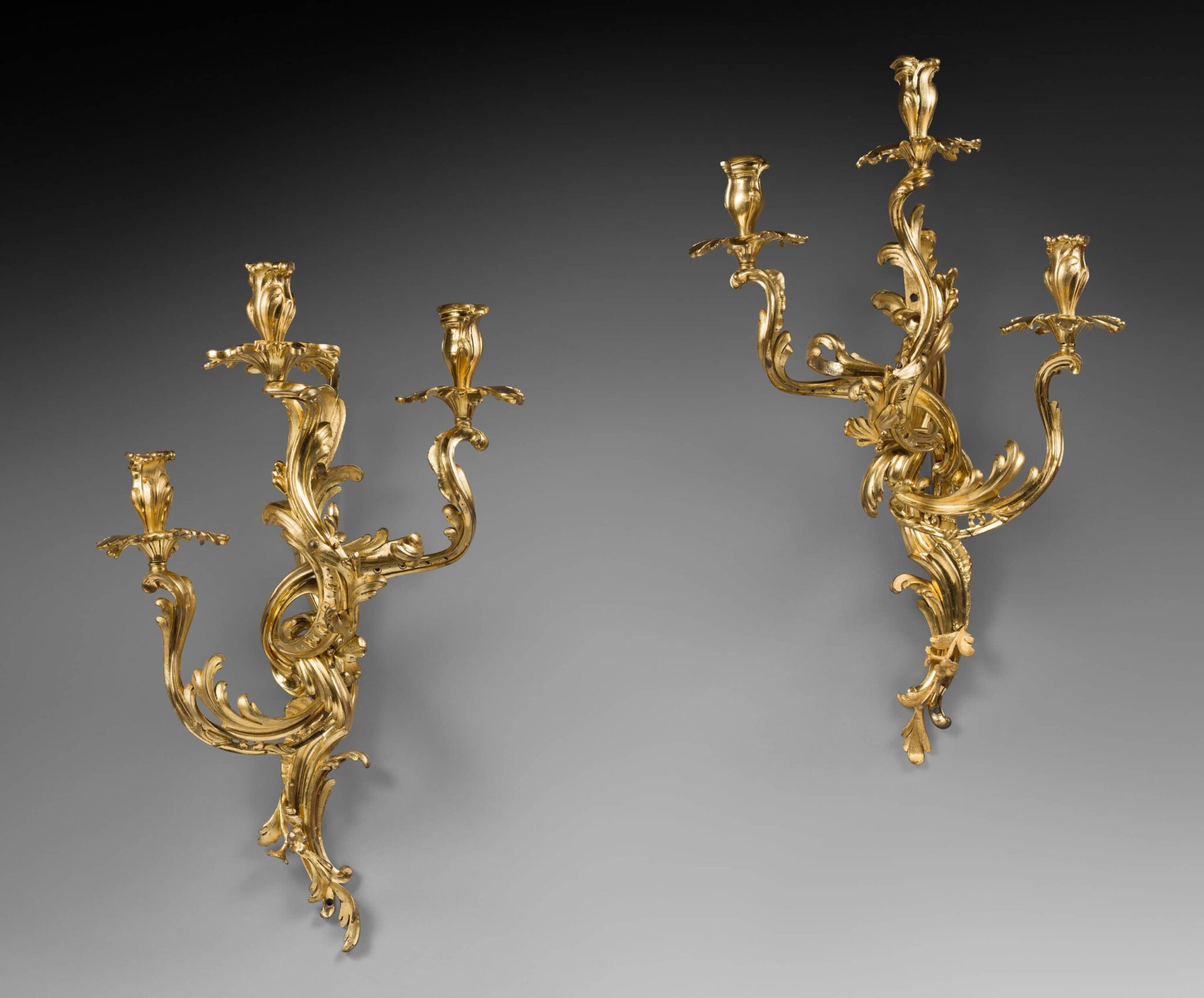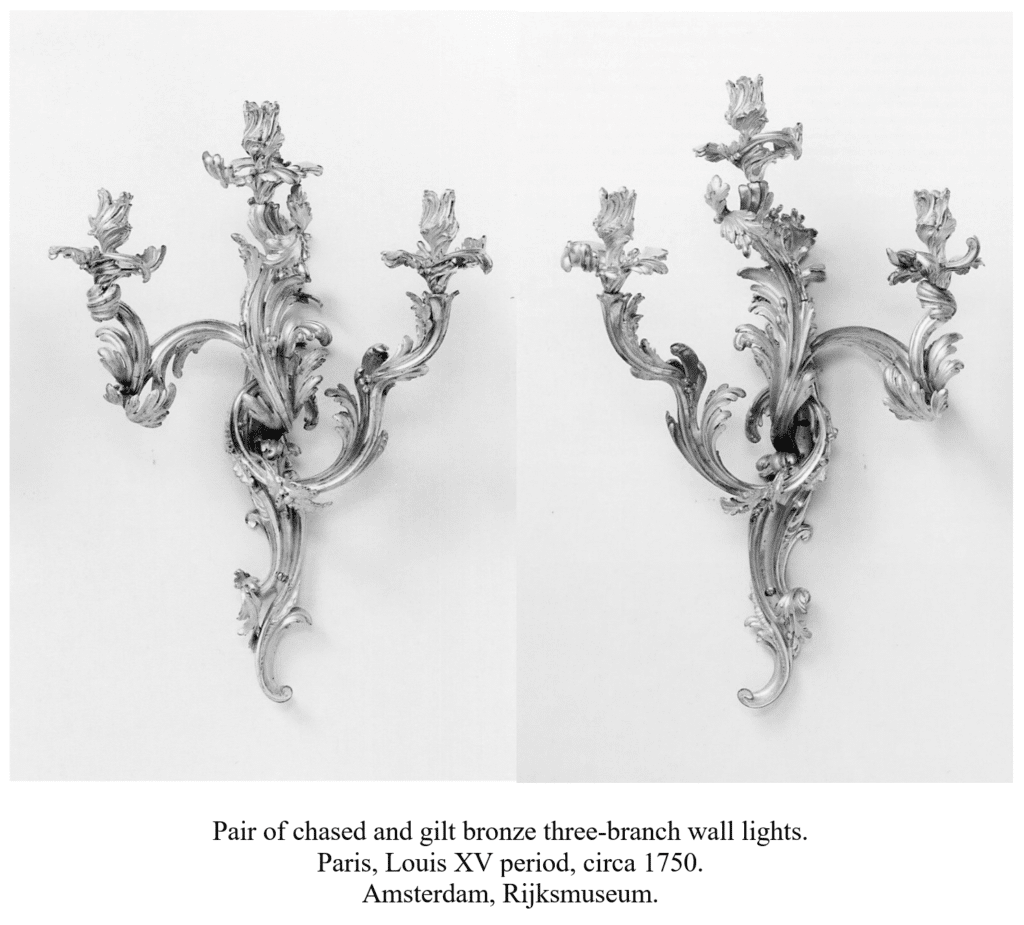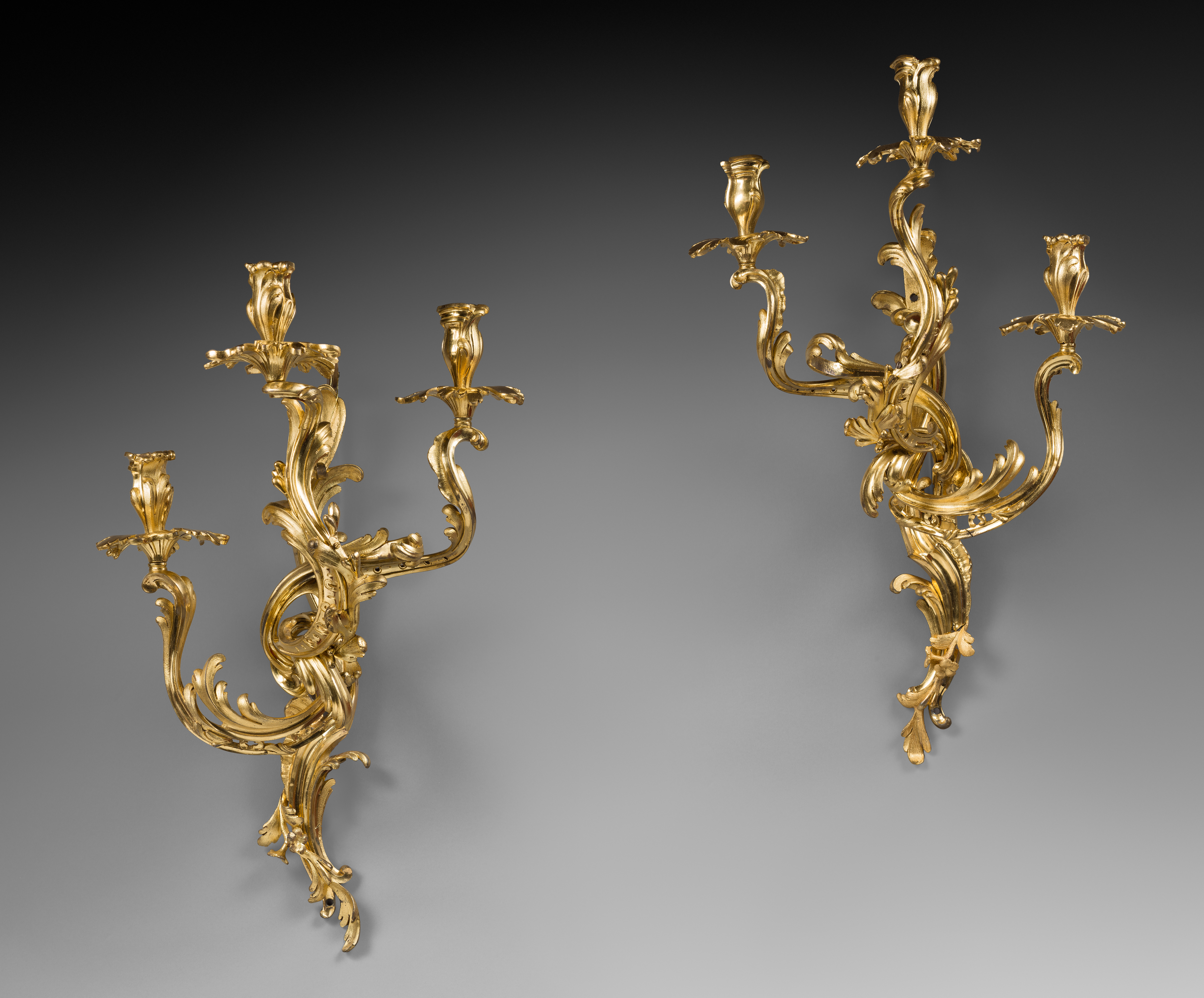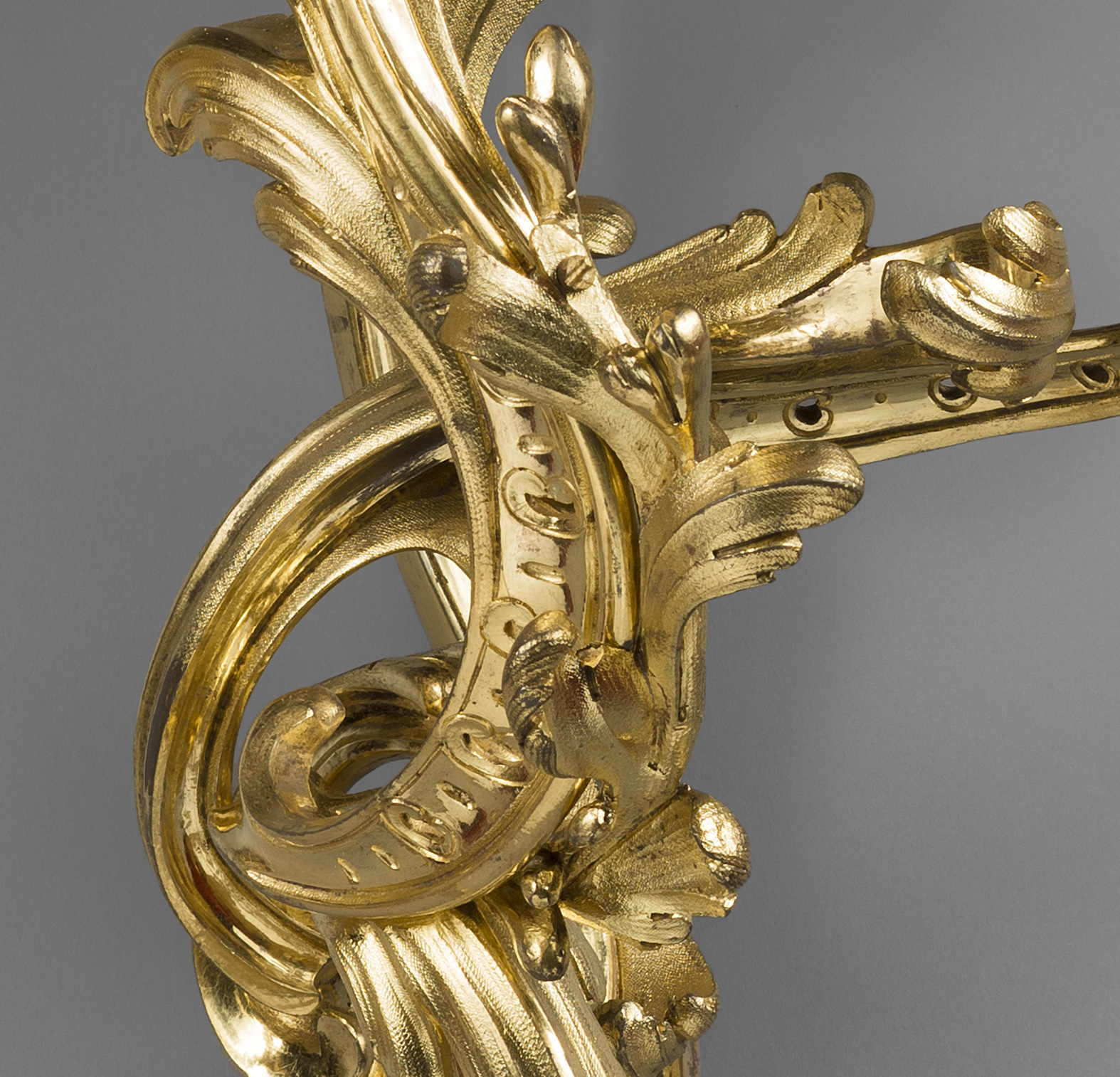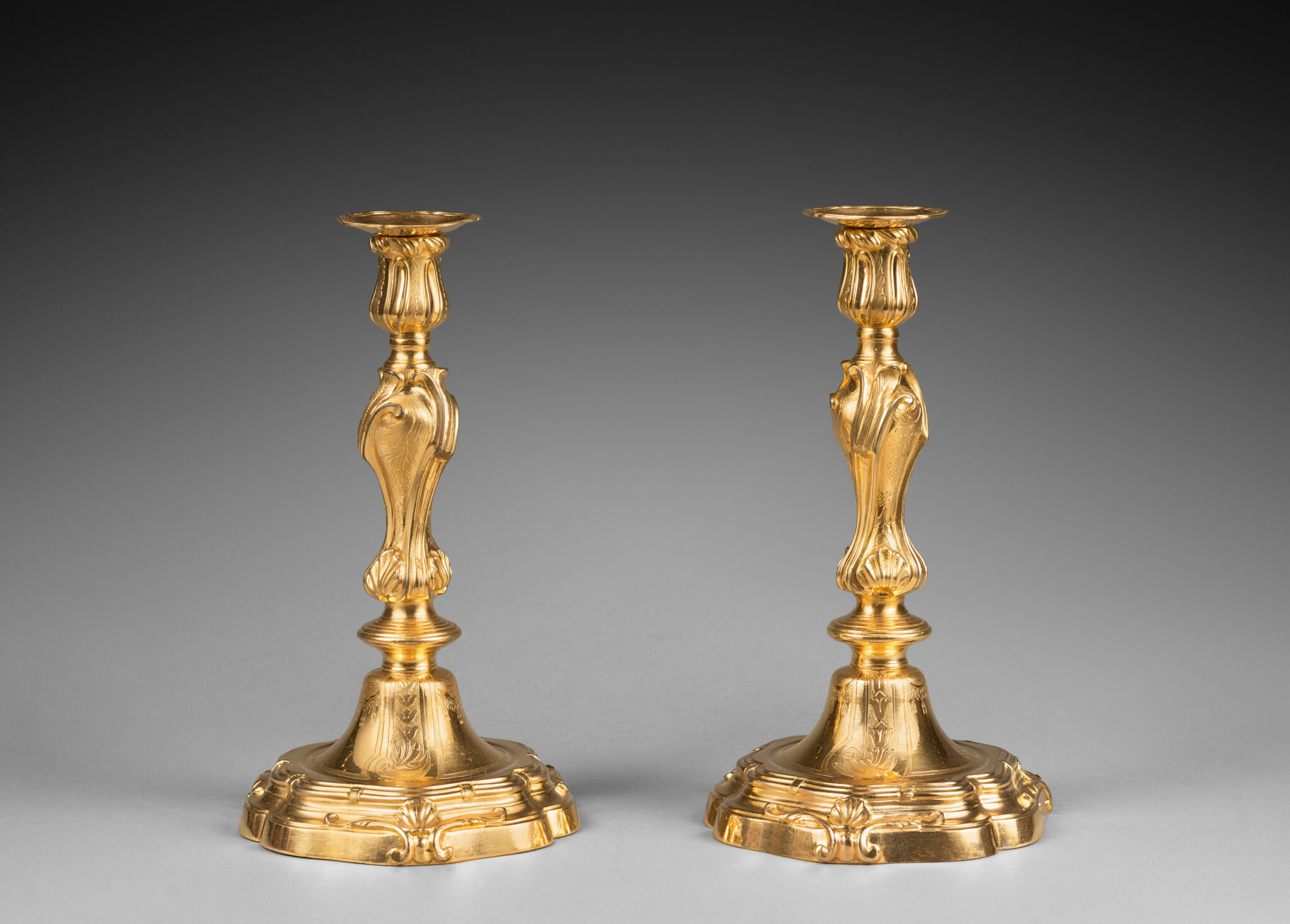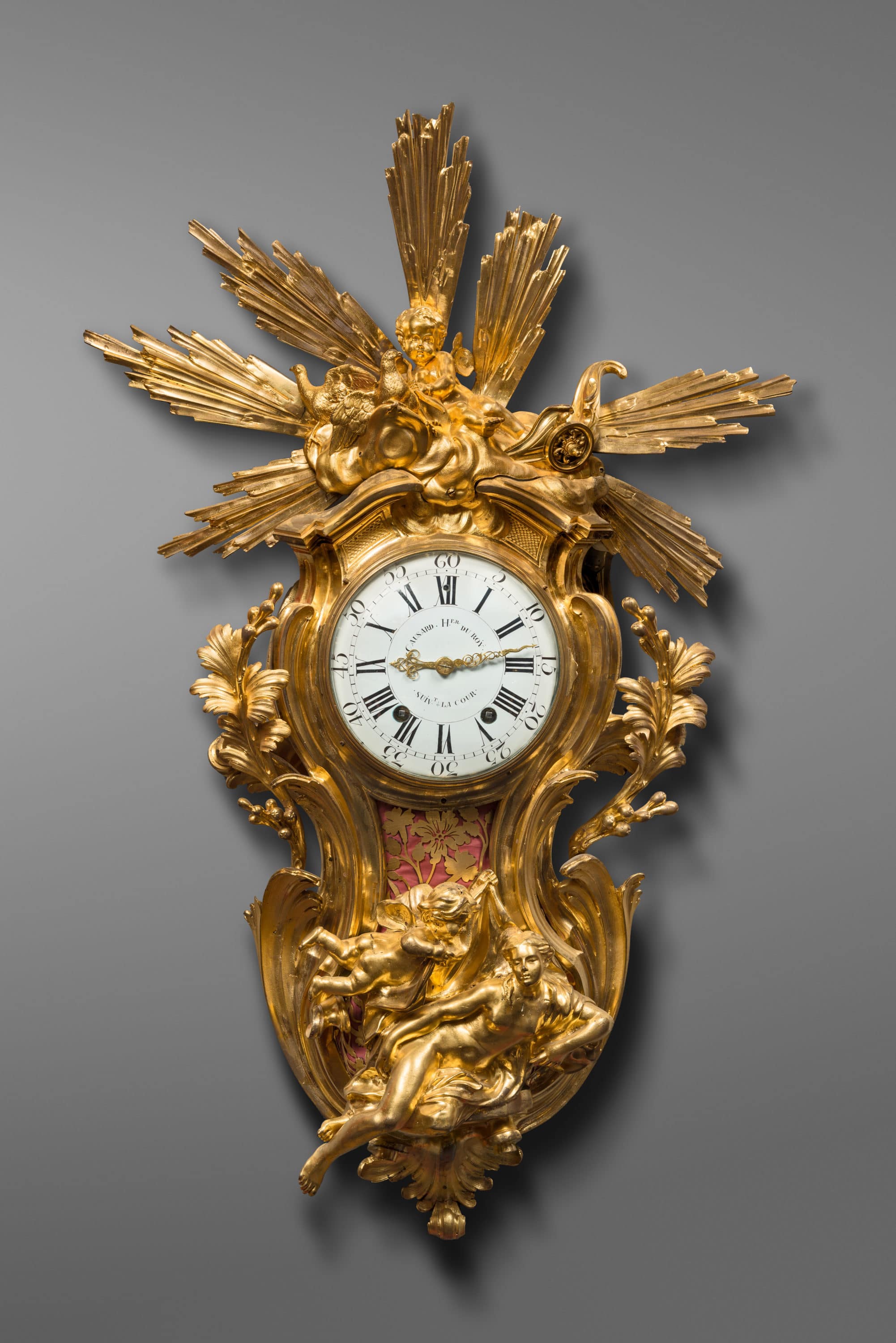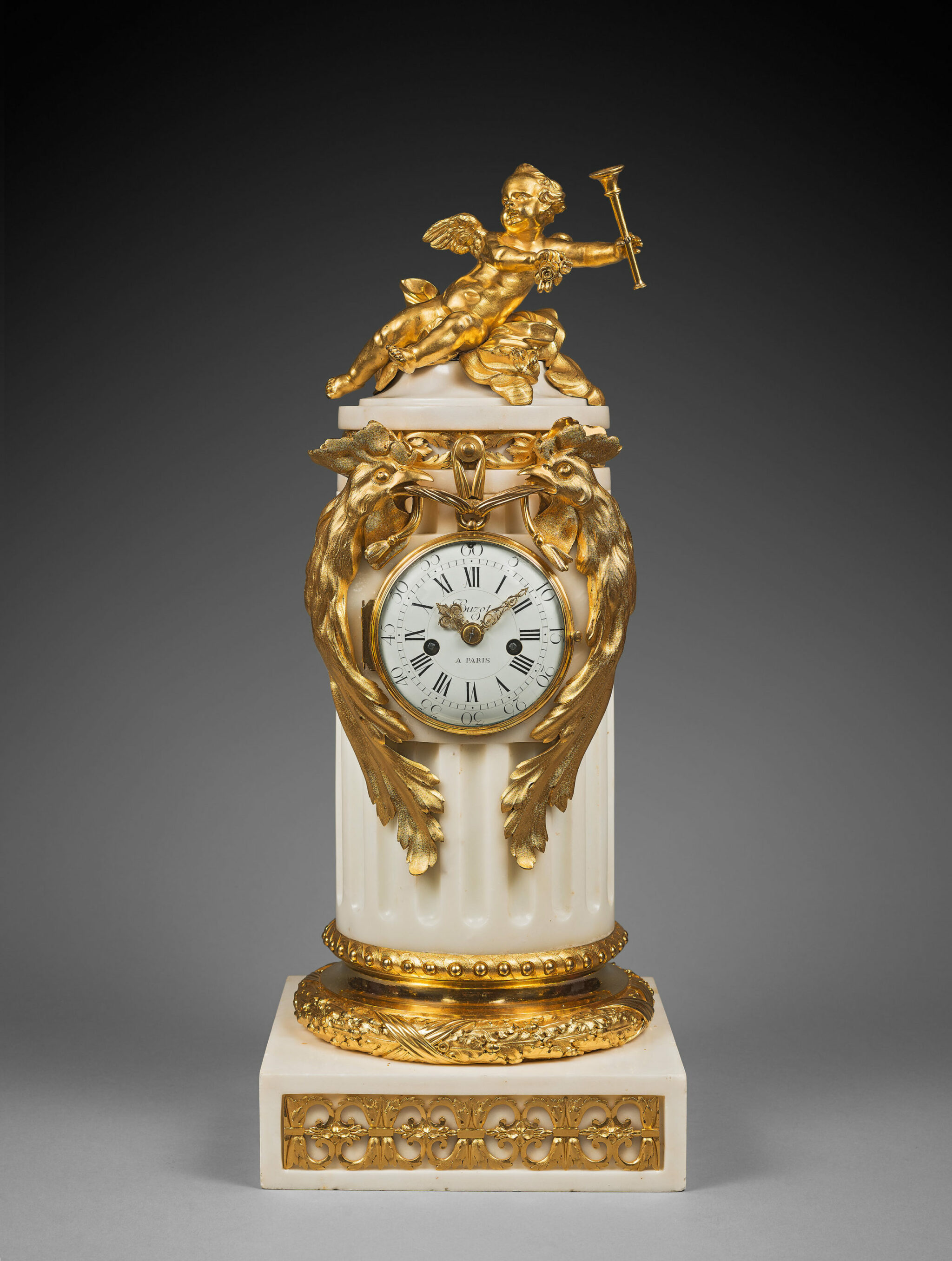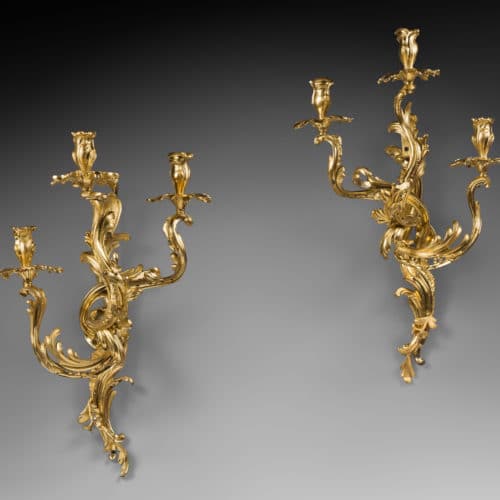Important Pair of Finely Chased, Pierced, and Gilt Bronze Rococo Three-Branch Wall Lights
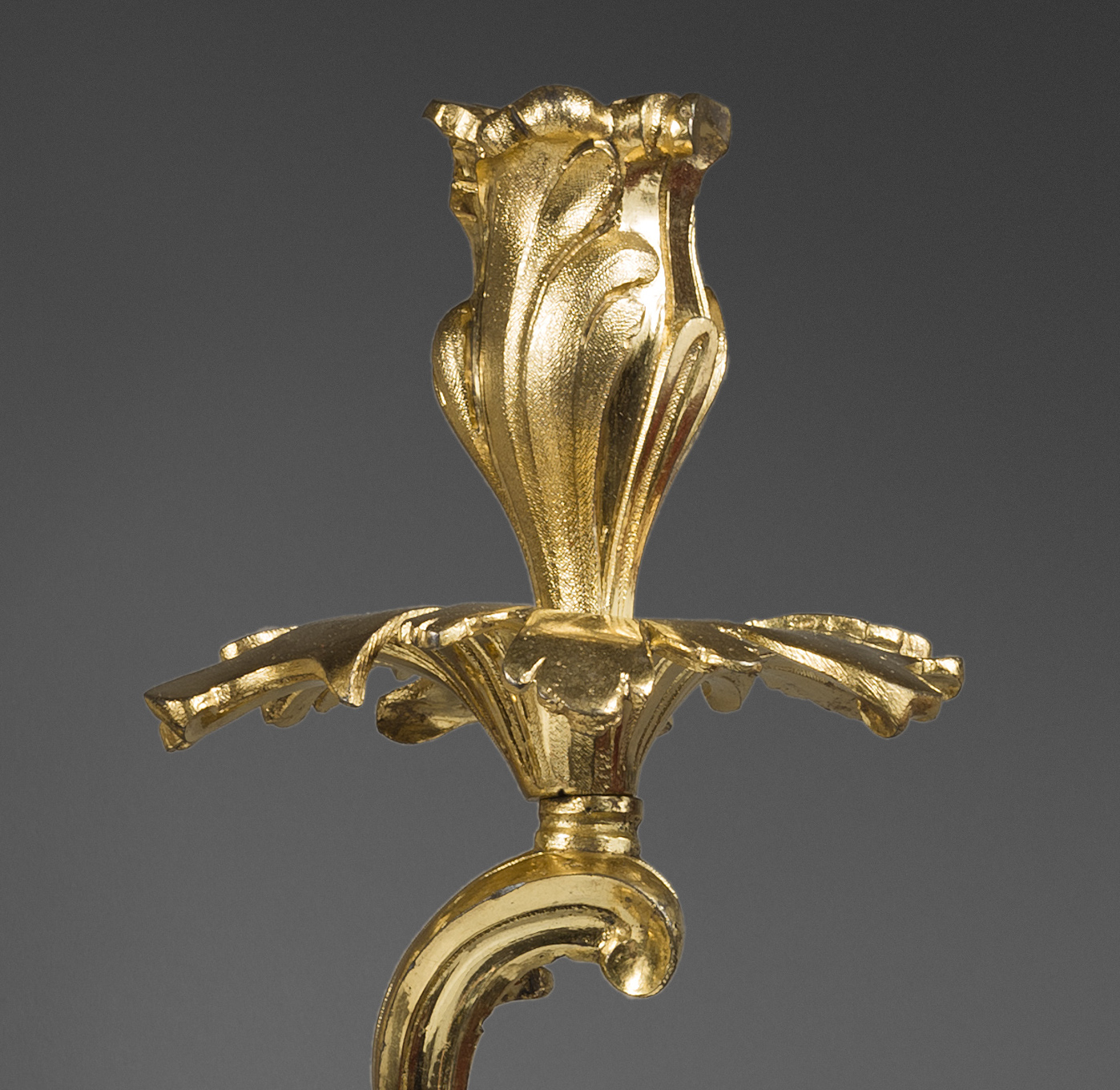
Attributed to Philippe Caffieri
Paris, Louis XV period, circa 1755
Made entirely of finely chased, pierced, and gilt bronze, each wall light features a rococo composition with a sinuous stem that is adorned with C-scrolls, volutes, flowers and foliage, which issues the three curved light branches that emerge from leafy bouquets and are decorated with scrolls, seeds, and egg-and-dart motifs. They support drip pans formed of spread petals that contain the nozzles made of leaves with reserves.
This important pair of wall lights, designed in the purest rococo style of the mid-18th century in Paris, stands out due to its balanced and harmonious composition and the exceptional quality of its chasing and gilding, which demonstrate the remarkable technical mastery of the bronze caster who created the model. We attribute them to the early years of Philippe Caffieri’s career, to around the time he took over his father’s workshop in 1755.
Today, only a few comparable examples are known, some of which have been attributed to Philippe Caffieri. Among them, two pairs of wall lights in the Quirinal Palace in Rome (illustrated in A. Gonzalez-Palacios, Il Patrimonio artistico del Quirinale, Gli Arredi Francesi, Milan, 1996, p. 245, catalogue n° 54). A second pair is in the Musée du Château de Fontainebleau (see J-P. Samoyault, Musée national du Château de Fontainebleau, Catalogue des collections de mobilier, 1. Pendules et bronzes d’ameublement entrés sous le Premier Empire, RMN, Paris, 1989, p. 123). A fourth example is in the National Museum of Stockholm (illustrated in H. Ottomeyer and P. Pröschel, Vergoldete Bronzen, Die Bronzearbeiten des Spätbarock und Klassizismus, Band I, Munich, 1986, p. 141, fig. 2.11.13). A fifth pair is in the Musée Jacquemart-André in Paris (illustrated in G. Mabille, Le style Louis XV, Paris, 1978, p. 172, fig. 4). One further pair of similar wall lights, formerly in the collection of Dr Fritz Mannheimer, is in the Rijkmuseum in Amsterdam (see R. Baarsen, Paris 1650-1900, Decorative Arts in the Rijksmuseum, 2013, p. 144-145, catalogue n° 31).
Philippe Caffieri (1714 - 1774)
Philippe Caffieri was no doubt the most important Parisian bronze caster of the late 18th century. The brother of sculptor Jean-Jacques Caffieri (1725-1792) and the son of Jacques Caffieri (1678-1755), “Sculpteur et ciseleur ordinaire du Roi”, in 1747 he went into partnership with his father. He became a master sculptor in January 1754 and a member of the Académie de Saint-Luc.
Upon the death of his father the following year, he took over the family workshop in the rue Princesse, purchasing his brother’s share of the workshop’s rococo models. Several months later, as a master’s son, he became a master caster “en terre et sable”. Initially he continued in the rococo style his father had favored, but later developed new models in the neoclassical style. He worked on the first example of an antique-inspired piece of furniture that was commissioned by the wealthy financier Ange-Laurent Lalive de Jully. Throughout his career, Philippe Caffieri worked for the most important Parisian collectors of the time.
